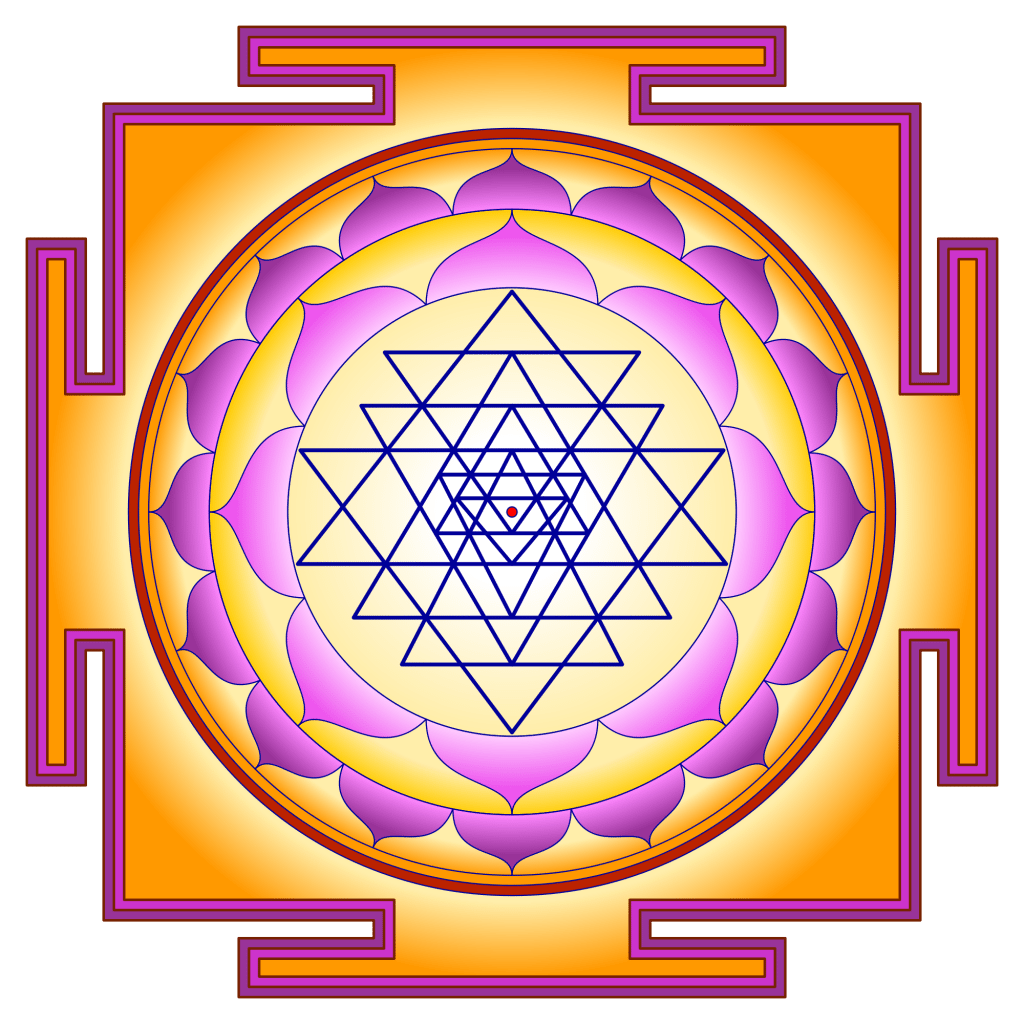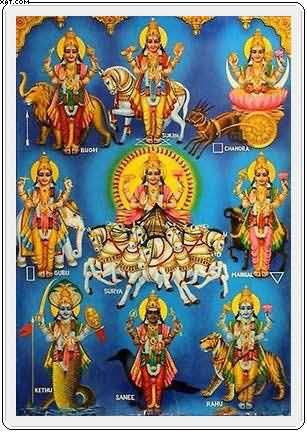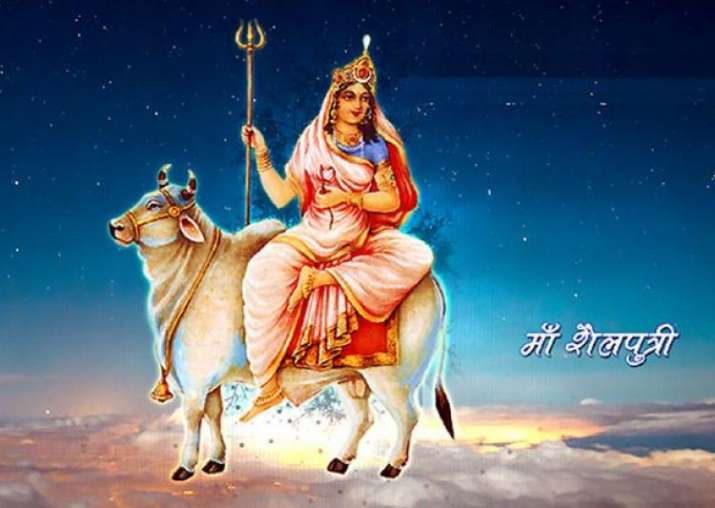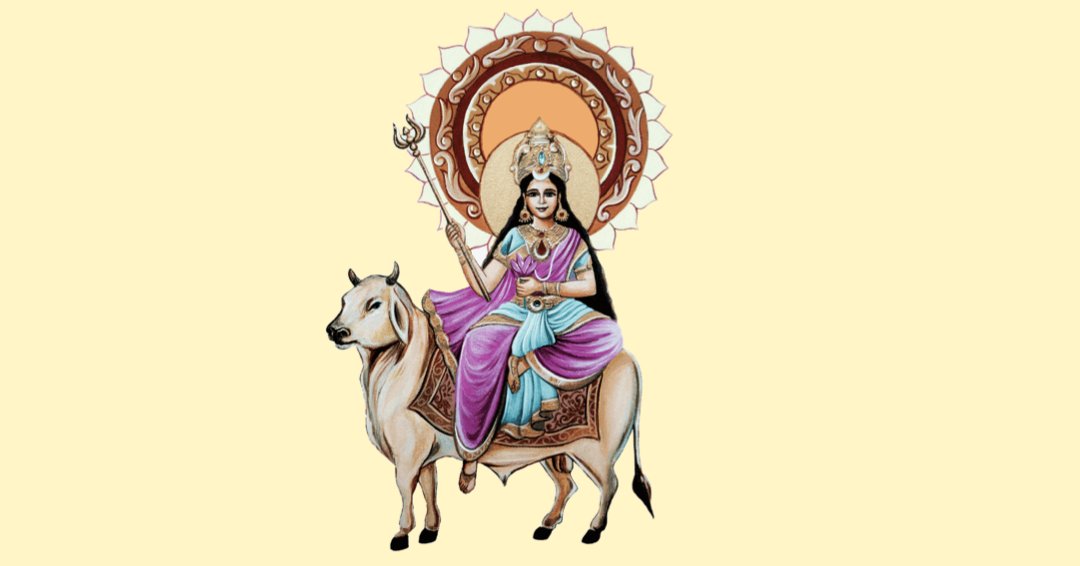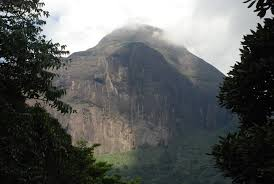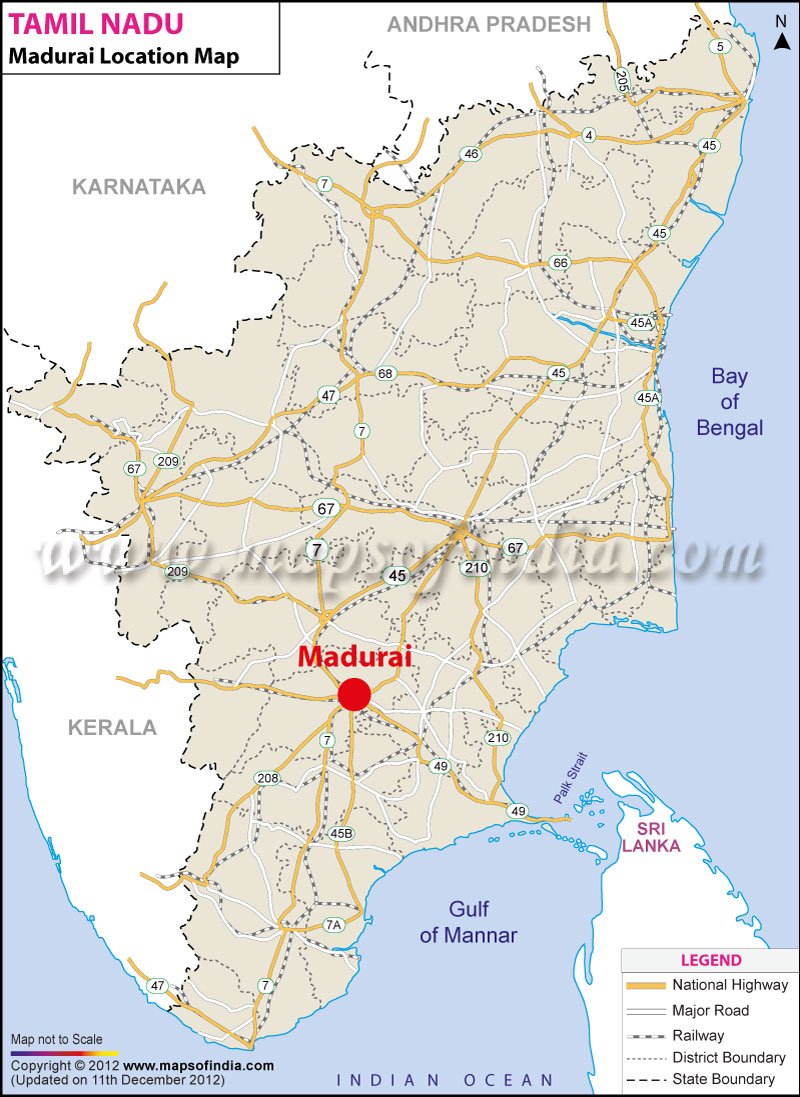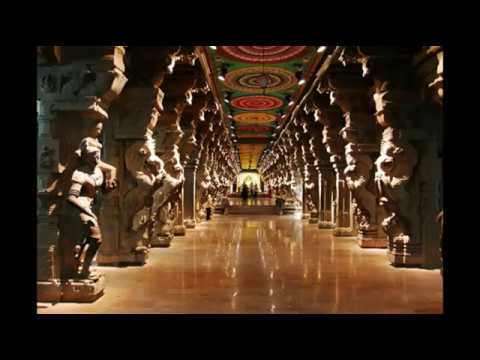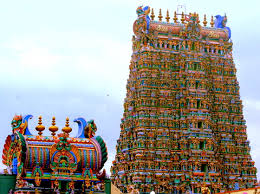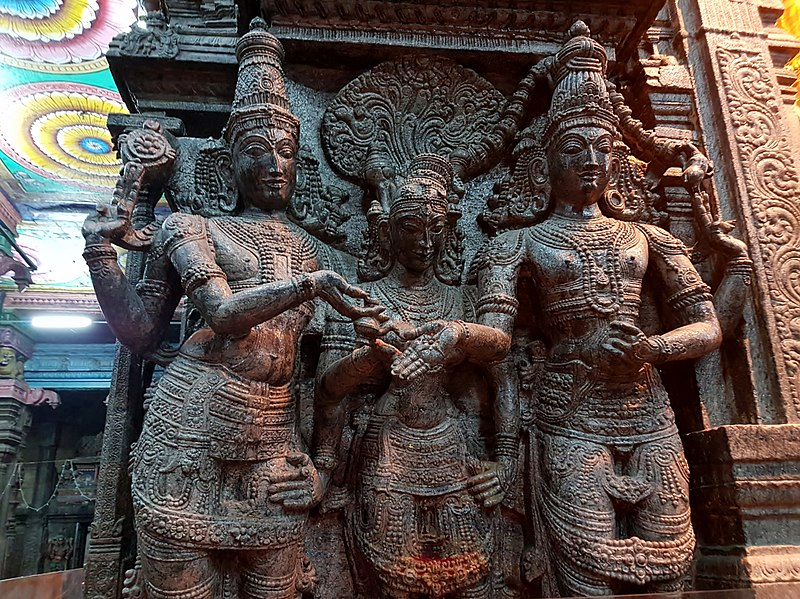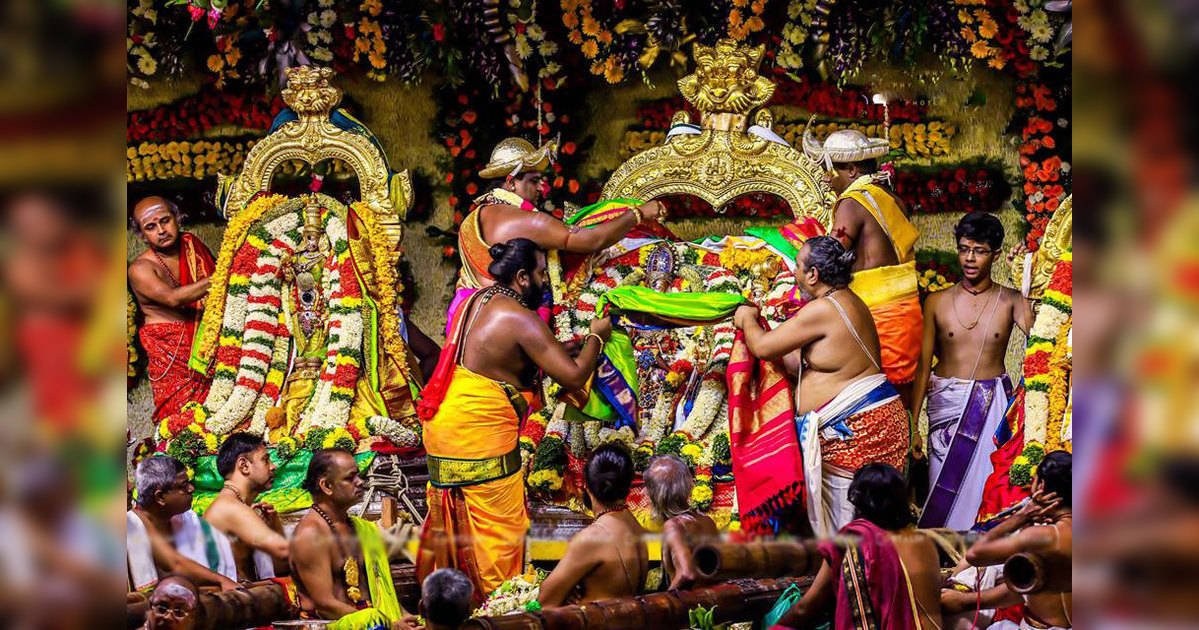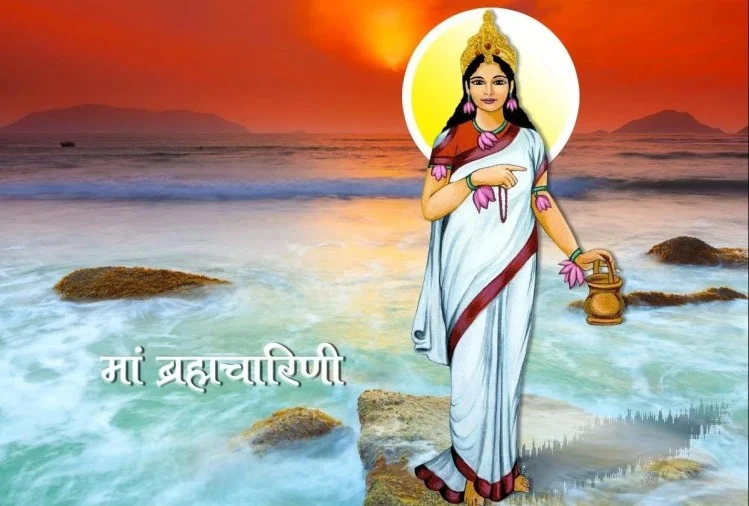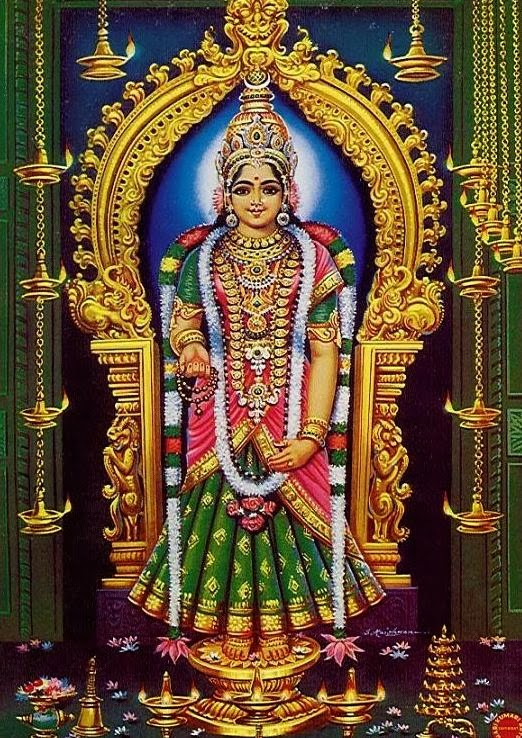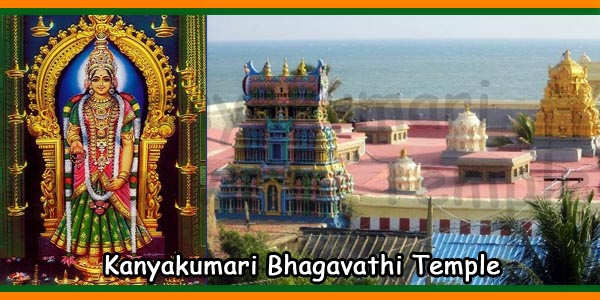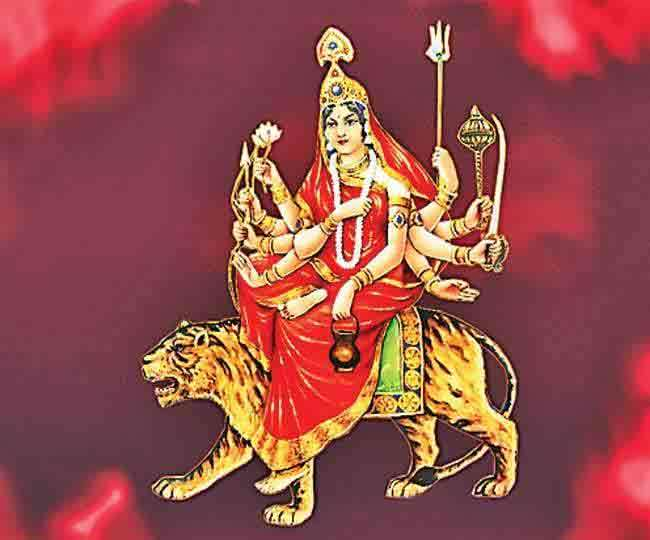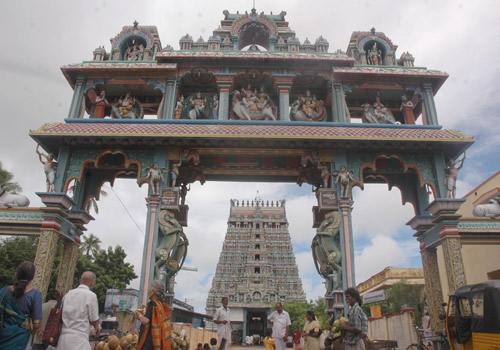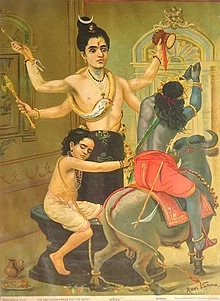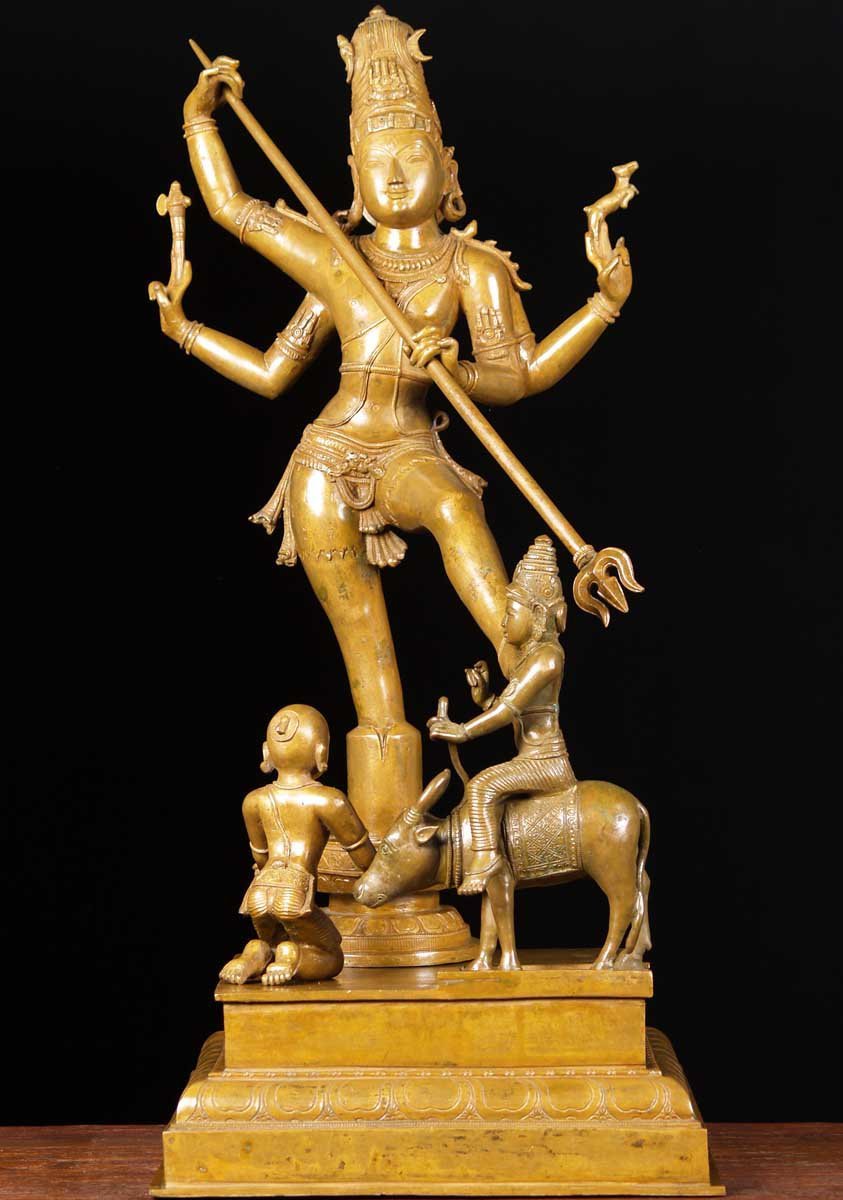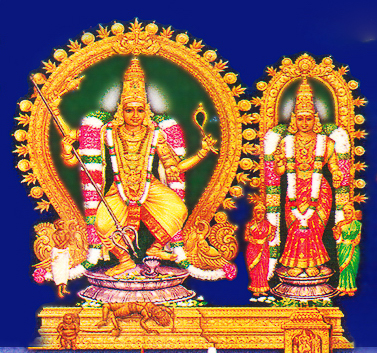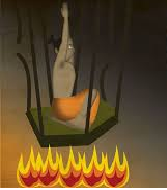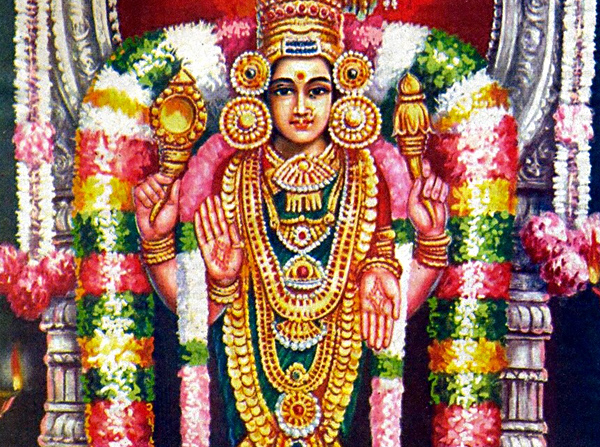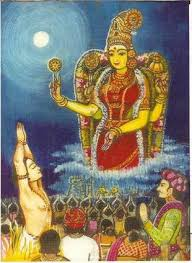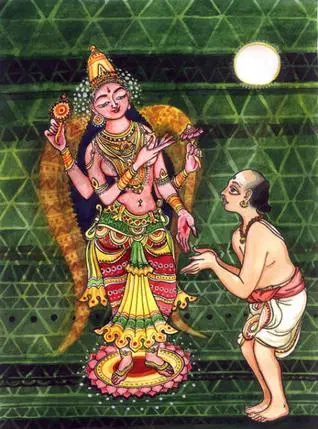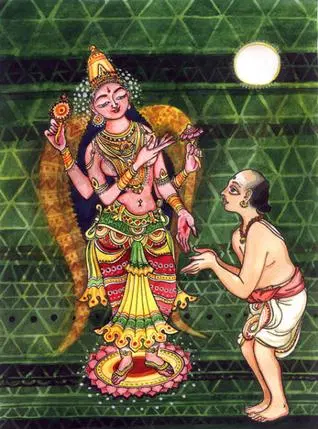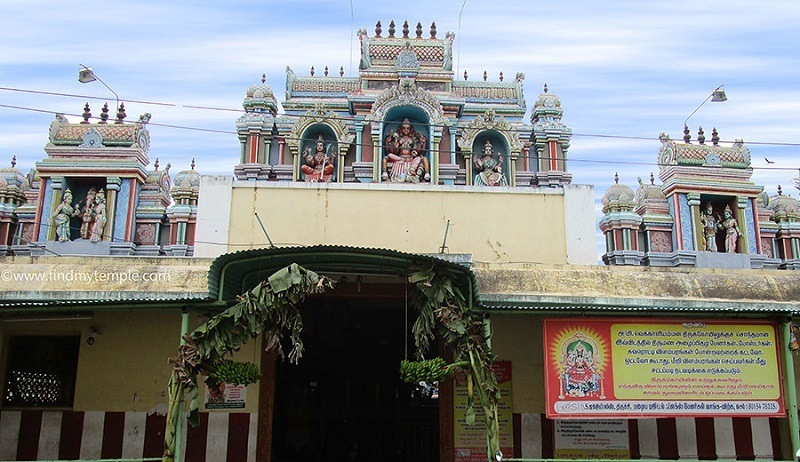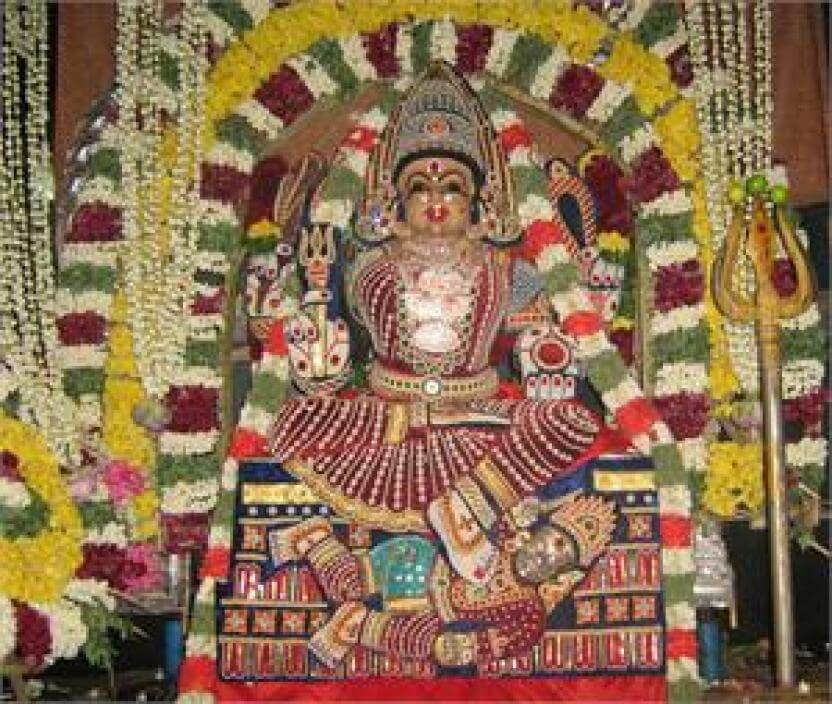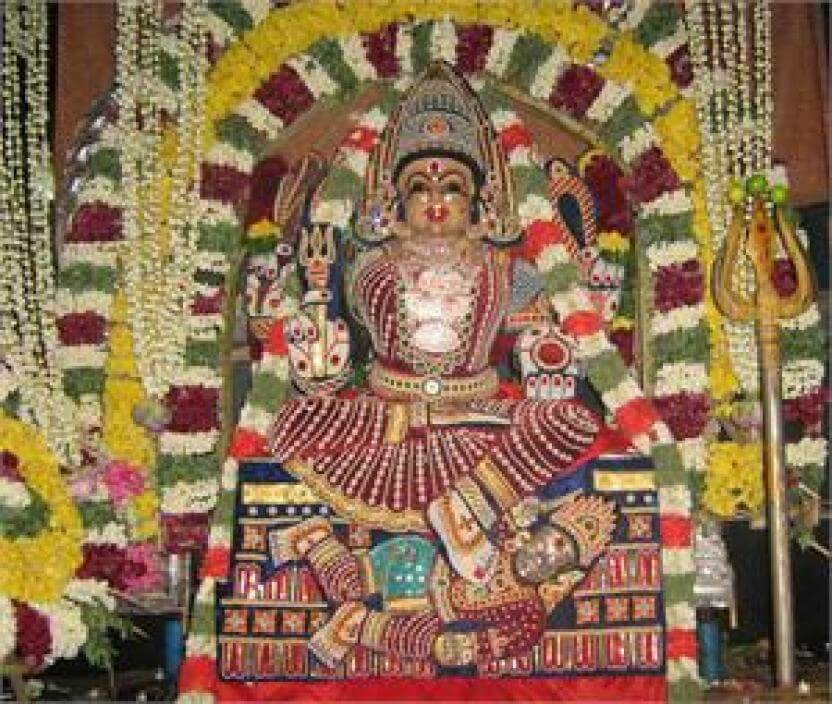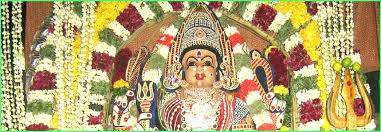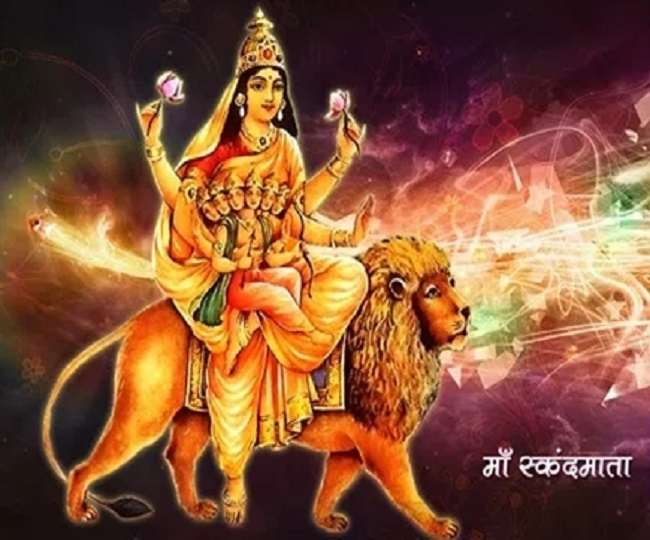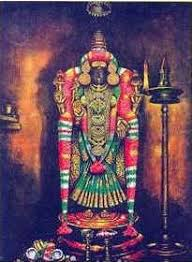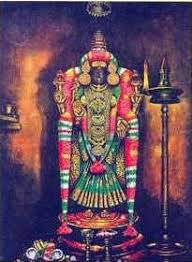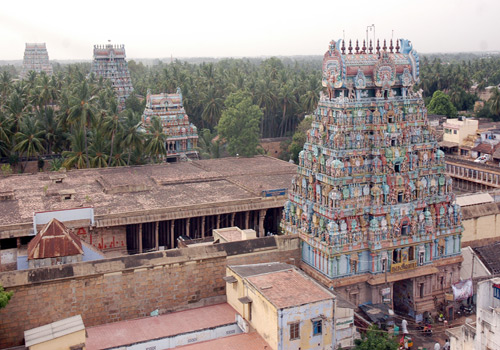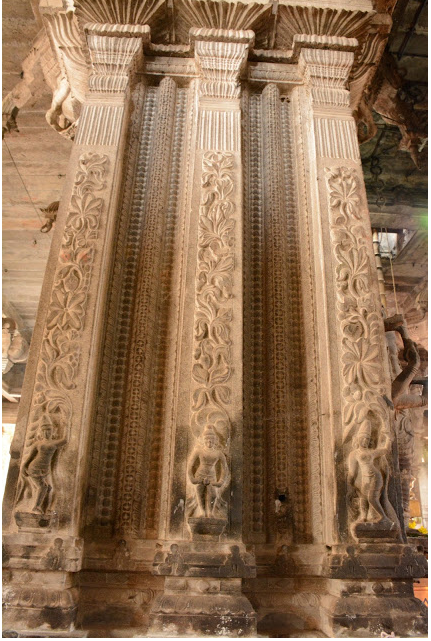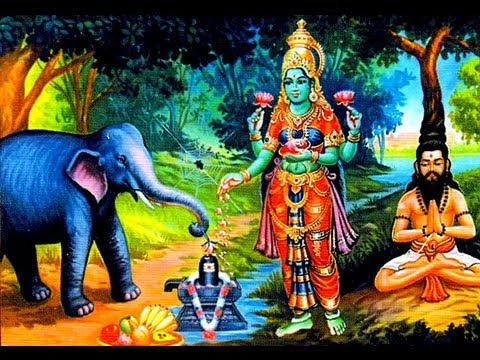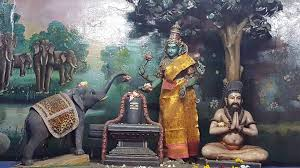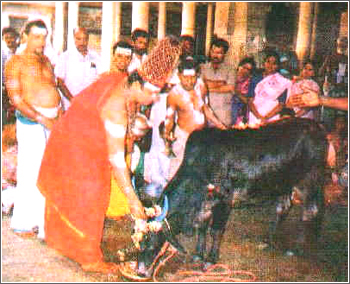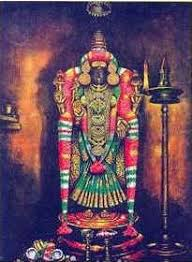Today is the 2nd day of #Navratri2020
Over the last two years, I had written about sets of Carnatic kritis composed by Muthuswamy Dikshithar during #Navratri
#Thread
Over the last two years, I had written about sets of Carnatic kritis composed by Muthuswamy Dikshithar during #Navratri
#Thread
In 2018, we spoke about the Kamalaamba Navavaranas. https://twitter.com/jeysundhar_d/status/1050333783986073600
The Navavaranas are 9 Kritis (Compositions) by Muthuswamy Dikshithar.
The Navavaranas are 9 Kritis (Compositions) by Muthuswamy Dikshithar.
The kritis are dedicated to Kamalamba/Kamalambigai, the Goddess of the Thyagaraja Temple at Thiruvaroor.
As Dikshithar was a Srividya Upasaka, each kriti was also dedicated to a different level (Avarana) of the Sri Chakra, which has a total of 9 levels, hence Navavaranas.
The thread eventually became an Indian Express article. https://indianexpress.com/article/opinion/the-secrets-of-the-kamalaamba-navavarana-kritis-unraveling-the-nine-layers-to-bliss-5406206/
Last year, I wrote about the Navagraha kritis, also composed by Muthuswamy Dikshithar. https://twitter.com/jeysundhar_d/status/1178228251468034052
Since 2020 has been what it has been, and since most of our travel plans, including pilgrimages have not been happening, I thought for #Navratri2020 I will write about 9 temples of Tamil Nadu.
Tamil Nadu has 1000s of temples. Which ones to pick? On what grounds? Why these and not these?
Yes, these are all valid questions!
Yes, these are all valid questions!
For obvious reasons, I have attempted to choose Devi temples that are well-known (we should do a separate thread for the 100s of temples that are more obscure).
At the same time, I have also attempted to choose temples where the form of Devi has aspects similar to the Nava Durga, the nine forms of Devi worshipped during #Navaratri
What are these Navadurga forms? Here you go!
In order, they are:
1. Shailaputri
2. Brahmacharini
3. Chandraghanta
4. Kushmanda
5. Skandamata
6. Katyayini
7. Kaalratri
8. Mahagauri
9. Siddhidhatri.
In order, they are:
1. Shailaputri
2. Brahmacharini
3. Chandraghanta
4. Kushmanda
5. Skandamata
6. Katyayini
7. Kaalratri
8. Mahagauri
9. Siddhidhatri.
We would be looking at one temple every day, where the aspects of the deity share similarities with the Durga (from the Nava Durga) of that day.
Since we're a day late (yes, as always  ), we'll do two today.
), we'll do two today.
Let's get started!
 ), we'll do two today.
), we'll do two today. Let's get started!
Day 1: Shailaputri
The daughter of the mountain! Shailaputri, as Parvati, is the daughter of the Parvata Raja!
The daughter of the mountain! Shailaputri, as Parvati, is the daughter of the Parvata Raja!
With her forehead adorned by Chandra and her hands holding the Trishula and Kamala, she is the personification of serenity, riding the Vrishabha.
So, which form of the Devi in which temple of Tamil Nadu is Shailaputri?
Meenakshi is born as the daughter of Malayadhwaja Pandian, the Pandya King of Madurai.
In his realm are the Podhigai Hills, also known as Dakshina Kailasam.
In his realm are the Podhigai Hills, also known as Dakshina Kailasam.
So, as the daughter of Malayadhwaja Pandya, Meenakshi is also Shailaputri.
Here's the Meenakshi Amman temple of Madurai.
Here's the Meenakshi Amman temple of Madurai.
A slight tangent to talk about the city our Queen Meenakshi rules!
Madurai is one of the oldest, continuously inhabited cities in the world.
Today, it is considered the point from which South Tamil Nadu begins.
Madurai is one of the oldest, continuously inhabited cities in the world.
Today, it is considered the point from which South Tamil Nadu begins.
The city's name finds mentions all across classical Tamil literature, especially Madurai Kanchi of the Pathu Pattu of the Sangam era.
Madurai Kanchi talks about the city, its administration, the temples, social life and various other aspects and is a rich source of historical information.
Madurai is also the city that is called Naan Maada Koodal, or the meeting of the four streets.
The old city spread in concentric patterns, with the Meenakshi Temple at its center.
The old city spread in concentric patterns, with the Meenakshi Temple at its center.
Based on literary evidence, the temple seems to have existed from before antiquity!
But the present structure is more recent.
Of course, "recent" in the Indian context is still at least a 1000 years!
But the present structure is more recent.
Of course, "recent" in the Indian context is still at least a 1000 years!
Sadayavarman Kulasekara Pandya is believed to have built most of the older parts of the temple that we have today.
The earliest inscription in the present temple is from 1194 CE and refers to his donation for lighting lamps.
The earliest inscription in the present temple is from 1194 CE and refers to his donation for lighting lamps.
Like most old temples of Tamil Nadu, Madurai too was subjected to the tyrannical attack of both Malik Kafur and Muhammad bin Tughluq.
The temple wealth was looted and various parts of the temple destroyed.
The temple wealth was looted and various parts of the temple destroyed.
After MB Tughluq started his experiments and lost control of territories in the south, the Madurai Sultanate was established and reigned for almost half a century.
Literary evidence of later centuries suggests worship was suspended and temples lost their glory.
Literary evidence of later centuries suggests worship was suspended and temples lost their glory.
The Madurai Sultanate was dismantled by Kumara Kampanna of the Vijayanagar Empire.
This is chronicled by his wife Gangamma Devi in the Sanskrit work Madura Vijayam.
This is chronicled by his wife Gangamma Devi in the Sanskrit work Madura Vijayam.
Most of the Meenakshi temple we see today, was built after this, by the Vijayanagar Empire and subsequently by the Nayaks of Madurai, during Viswanatha Nayaka and Thirumala Nayaka,
The Aayiram Kaal Mandapam (1000-pillared hall) of the temple, for example, was built by Ariyanatha Mudaliar, the Prime Minister of Viswanatha Nayaka.
Our beloved Meenakshi, dear daughter of Maladhwaja Pandiyan goes on a Digvijaya (conquest), subduing all challengers.
Eventually she meets Sundareswara, the handsome Lord (and from whom I get my name
 )
)
Eventually she meets Sundareswara, the handsome Lord (and from whom I get my name

 )
)
It is love at first sight!
The wedding is held at the bride's place, in Madurai!
Meenakshi Thirukkalyanam (the wedding of Meenakshi to Sundareswara) is one of the most important festivals of the city.
The wedding is held at the bride's place, in Madurai!
Meenakshi Thirukkalyanam (the wedding of Meenakshi to Sundareswara) is one of the most important festivals of the city.
The scene depicting Vishnu giving his sister in marriage to Sundareswara is one of the most popular sculpture motifs in temples of Tamil Nadu.
It is also ubiquitous in wedding halls, for obvious reasons.
It is also ubiquitous in wedding halls, for obvious reasons.
Sundareswara could be the Mappillai/Damaad! But the people of Madurai would always refer to the temple as that of their Queen.
It is always the Meenakshi Amman Temple!

It is always the Meenakshi Amman Temple!


Please read this wonderful thread by @MadhuKcvn on the inscriptions found in the Meenakshi Amman temple. https://threadreaderapp.com/thread/1248607787753410567.html
#Navratri is incomplete without songs!
If it was Muthuswamy Dikshithar for the last two years, today we will listen to a song composed by Muttaiah Bhagavathar, dedicated to the Mother of Madurai!
Mathey Malayadhwaja in Ragam Kamaas.
If it was Muthuswamy Dikshithar for the last two years, today we will listen to a song composed by Muttaiah Bhagavathar, dedicated to the Mother of Madurai!
Mathey Malayadhwaja in Ragam Kamaas.
Another rendition of the same kriti by Ranjani-Gayatri (Thank you @wtfex)
That brings us to the end of Day 1 dedicated to Shailaputri/ Meenakshi.
We will try to end the thread for each day with a song dedicated to the deity.
We will try to end the thread for each day with a song dedicated to the deity.
Since we are a day behind, shall we try to catch up?
Let's start with the Devi for Day 2!
Let's start with the Devi for Day 2!
Day 2: Brahmacharini
Brahmacharini is an ascetic, walking barefoot (as compared to Shailaputri on the Vrishabha), with an Aksharamala and Kamandala in her hands
Brahmacharini is an ascetic, walking barefoot (as compared to Shailaputri on the Vrishabha), with an Aksharamala and Kamandala in her hands
Where else is Devi found with Aksharmala in her hand?
Where would you expect Devi to be barefoot?
How about on a serene beach with the seas washing her feet?
Where would you expect Devi to be barefoot?
How about on a serene beach with the seas washing her feet?
On the southern tip of the Indian subcontinent, overlooking the Bay of Bengal, Arabian Sea and the Indian Ocean, Devi Kanyakumari stands, holding an Aksharmala in her hands!
Why is Kanyakumari a Kanya? Where is her consort?
The Sthala Puranam (as with all Sthala Puranams) is quite interesting!
The Sthala Puranam (as with all Sthala Puranams) is quite interesting!
Banasura, with his suppression of the Devas, created major imbalances in Nature.
But nobody could challenge him, because of the powerful boons he had received.
Only a Kanya could kill him!
But nobody could challenge him, because of the powerful boons he had received.
Only a Kanya could kill him!
When Nature is imbalanced, who else do you go to but Prakriti Herself!
Devi manifested herself as a Kanya on the southern tip of India.
Devi manifested herself as a Kanya on the southern tip of India.
However, as an ascetic, involved in penances dedicated to Lord Shiva, Kanyakumari was far from the aggression needed to take on Banasura.
Enter Narada!
Enter Narada!
Long story short, it was arranged that Shiva would marry her!
Shiva started from Suchindram (located nearby), the previous evening, hoping to reach Kanyakumari in time for the Muhurta.
Shiva started from Suchindram (located nearby), the previous evening, hoping to reach Kanyakumari in time for the Muhurta.
As expected, Shiva's entourage, with the other Gods, Devas, Rishis and his Ganas, took quite a while to gather around.
The journey was quite slow.
The journey was quite slow.
As they were nearing the destination, Narada decided to stir the pot further.
He crowed like a rooster, making the procession believe that daybreak had happened.
He crowed like a rooster, making the procession believe that daybreak had happened.
So according to them, the Brahma Muhurtam, when the wedding was to happen, had already passed. It was too late.
They turned around and went back, hoping to re-schedule.
They turned around and went back, hoping to re-schedule.
When Devi learnt of this, she was livid with anger.
Snubbed and insulted, she destroyed all the decorations and preparations kept for the wedding ceremony.
Snubbed and insulted, she destroyed all the decorations and preparations kept for the wedding ceremony.
At this point, Narada tempted Banasura to woo the Goddess!
You see how the Trilokasanchari was literally the Deus Ex Machina in several of these stories!
You see how the Trilokasanchari was literally the Deus Ex Machina in several of these stories!
When Banasura approached the Goddess, this only added fuel to her fury!
Bana stood no chance. He was immediately destroyed!
Bana stood no chance. He was immediately destroyed!
As her anger subsided, she chose to reunite with her consort Shiva.
Her Kanya form remained in Kanyakumari at the Bhagavathy Temple.
Her Kanya form remained in Kanyakumari at the Bhagavathy Temple.
With her penchant for penance, it is not surprising that ascetics have gravitated towards the Kanyakumari temple.
Swami Vivekananda visited the temple, was overwhelmed with devotion for Devi and swam across the sea to meditate on a rock.
The Vivekananda Memorial sits here.
Swami Vivekananda visited the temple, was overwhelmed with devotion for Devi and swam across the sea to meditate on a rock.
The Vivekananda Memorial sits here.
Let's conclude today's thread with a composition sung by Pithukuli Murugadas.
Devi Kanyakumari -
Devi Kanyakumari -
Day 3: Chandraghanta
With her forehead adorned by the half-moon, Chandraghanta is ten-armed carrying weapons, Aksharamala, Kamala and Kamandala.
Her hands are in Abhaya-Varada Mudra. She rides the tiger, rushing to protect her devotees.
With her forehead adorned by the half-moon, Chandraghanta is ten-armed carrying weapons, Aksharamala, Kamala and Kamandala.
Her hands are in Abhaya-Varada Mudra. She rides the tiger, rushing to protect her devotees.
Where has Devi rushed to protect her devotee, with the moon involved?
Yes, today we will be looking at Abirami, the Goddess of Thirukkadaiyur!
Because, when devotees need Abhaya, can Abirami be far away?
Because, when devotees need Abhaya, can Abirami be far away?
Let's take a tangent and look at the Sthala Puranam of the temple.
Since he was not worshipped before Samudra Manthan, a miffed Ganesha hid the pot of Amruta, the Amruta Ghata here.
Since he was not worshipped before Samudra Manthan, a miffed Ganesha hid the pot of Amruta, the Amruta Ghata here.
He performed Abhishekam for his parents, with the Amruta from the Ghata. Hence, Amritaghateswara.
But there's a more interesting part of the Sthala Puranam!
The story of the evergreen 16-year old sage!
But there's a more interesting part of the Sthala Puranam!
The story of the evergreen 16-year old sage!
Yes! Markandeya was born to his parents Mrikandu and Marudamati, not too far from Thirukkadaiyur!
Shiva offered them an average child with a long life, or a brilliant child but with a ephemeral 16 years!
Shiva offered them an average child with a long life, or a brilliant child but with a ephemeral 16 years!
The dilemma they must have been through!
After all, the mother, as Thiruvalluvar would say, would feel greater happiness than that of child-birth, upon hearing that her son is a true Master!
But would that mean losing him at 16?
After all, the mother, as Thiruvalluvar would say, would feel greater happiness than that of child-birth, upon hearing that her son is a true Master!
But would that mean losing him at 16?
Eventually, both parents went with it!
Thus was born Markandeya, the exemplary scholar-sage who was destined to die at 16.
Unsurprisingly, his parents kept this a secret from him.
Thus was born Markandeya, the exemplary scholar-sage who was destined to die at 16.
Unsurprisingly, his parents kept this a secret from him.
Time flies!
Soon, Markandeya was nearing the end of his life. Even if his parents weren't vocal about it, their faces made it obvious.
Something was eating them!
Soon, Markandeya was nearing the end of his life. Even if his parents weren't vocal about it, their faces made it obvious.
Something was eating them!
So, the boy asked them to break it to him, only for them to break down completely in front of him.
Slowly, through the tears and wailing, they told him that the lamp of his life was going to be extinguished.
His reaction was a shocker! To them!
Slowly, through the tears and wailing, they told him that the lamp of his life was going to be extinguished.
His reaction was a shocker! To them!
The enlightened Markandeya was least affected. He brushed away the news as an eventuality that was inevitable.
But, in their love for him, his parents persisted.
All the wisdom in the world does not withstand the tears of your parents.
But, in their love for him, his parents persisted.
All the wisdom in the world does not withstand the tears of your parents.
So, the young Markandeya told them not to worry.
"Lord Shiva will protect me! He never turns down his devotees! You'll see!", he added looking at the incredulous look on their faces.
"Lord Shiva will protect me! He never turns down his devotees! You'll see!", he added looking at the incredulous look on their faces.
The destined day arrived. Markandeya bid farewell to his parents, promising to return.
He walked into the shrine of the Amritaghateswara and sat in prayer in front of the Lingam!
He walked into the shrine of the Amritaghateswara and sat in prayer in front of the Lingam!
Yama sent his foot-soldiers to get Markandeya. Little did he know that the boy was under the protection of Lord Shiva Himself!
They obviously failed.
They obviously failed.
Unfazed, Yama sat on his mighty steed and rode down to Thirukkadaiyur.
He tried to convince the boy to come with him.
Markandeya was too deep in meditation to be disturbed!
He tried to convince the boy to come with him.
Markandeya was too deep in meditation to be disturbed!
This was it! Yama cannot wait forever. He commanded that Markandeya depart with him.
Before anyone could blink, the boy rushed into the shrine and hugged the Lingam!
Before anyone could blink, the boy rushed into the shrine and hugged the Lingam!
Yama wasn't going to be discouraged by such gestures!
He threw his Pasa on Markandeya, and the Lingam!
The more he pulled, the more fervent Markandeya's chant went!
He threw his Pasa on Markandeya, and the Lingam!
The more he pulled, the more fervent Markandeya's chant went!
Yama pulled with all his force, creating an abrasion on the Lingam.
Out rose Shiva! After all, he is Mrityunjaya!
Out rose Shiva! After all, he is Mrityunjaya!
Can even Yama stand up to the God of the Three Worlds?
Shiva subdued Kala, becoming Kalakala and Kalantaka!
Shiva subdued Kala, becoming Kalakala and Kalantaka!
When Shiva rushes to protect his devotees, can Shakti be far behind?
Of course not.
Abirami is the better half of Amritaghateswara, after all!
Of course not.
Abirami is the better half of Amritaghateswara, after all!
So, now we come to the story of Abirami Bhattar!
Abirami Bhattar was born Subramanian! Overcome with his devotion for Abirami and singing her praise all day, he came to be known as Abirami Bhattar!
Abirami Bhattar was born Subramanian! Overcome with his devotion for Abirami and singing her praise all day, he came to be known as Abirami Bhattar!
One fine day, the Maratha Serfoji Raja of Thanjavur visited the temple.
Finding our dear Subramanian indifferent to his presence, the King got curious about him.
Finding our dear Subramanian indifferent to his presence, the King got curious about him.
While one called him a madman, another praised him as a Parama Bhakta of Abirami!
The king wanted to know which one was true. He decided to find out for himself.
The king wanted to know which one was true. He decided to find out for himself.
King: "You, man! Here, look at me! Yes, I'm talking to you!"
Abirami Bhattar: "Abirami is glorious! Abirami is great! Abirami is all!"
K: "I'm the ruler of Thanjavur and I am talking to you!"
AB: "Abirami rules the entire universe and she also talks to me!"
Abirami Bhattar: "Abirami is glorious! Abirami is great! Abirami is all!"
K: "I'm the ruler of Thanjavur and I am talking to you!"
AB: "Abirami rules the entire universe and she also talks to me!"
King: "Do you even hear what I'm saying? Ok, forget that. Tell me, will the moon rise tonight?"
AB: "Abirami is graceful! Abirami is the Poornachandrika, she is the full moon!"
K: "What?"
AB: "WHAT?! FULL MOON!"
The king took that to be AB's answer!
AB: "Abirami is graceful! Abirami is the Poornachandrika, she is the full moon!"
K: "What?"
AB: "WHAT?! FULL MOON!"
The king took that to be AB's answer!
Unfortunately, it was a Amavasya, the new moon night.
Forget about full moon, the moon was not going to be seen at all!
Forget about full moon, the moon was not going to be seen at all!
The King decided to teach Abirami Bhattar a lesson. One that he would not forget.
"If the moon does not rise in the sky by dusk, you will be burnt to death!"
"FULL MOON" said Bhattar.
"If the moon does not rise in the sky by dusk, you will be burnt to death!"
"FULL MOON" said Bhattar.
A giant pyre was prepared.
From the ceiling, a large disc was hung by 100 ropes.
The king had Bhattar board the disc.
He was given two options.
From the ceiling, a large disc was hung by 100 ropes.
The king had Bhattar board the disc.
He was given two options.
"Apologise for the misdemeanor and admit that you were wrong about the moon. OR fall on the burning fire and die."
Deep in devotion, Bhattar repeated, "FULL MOON!"
Some of Bhattar's well-wishers tried to reason with the king. He would have none of it.
Deep in devotion, Bhattar repeated, "FULL MOON!"
Some of Bhattar's well-wishers tried to reason with the king. He would have none of it.
Having tried that, they now tried to wake Bhattar up from his trance.
The realisation of what was about to happen, finally dawned upon Bhattar!
But then, just like Markandeya, Bhattar was not bothered!
The realisation of what was about to happen, finally dawned upon Bhattar!
But then, just like Markandeya, Bhattar was not bothered!
He boarded that stool, and watched the fire being lit right under him.
"Devi is Poornachandrika! There will be a full moon" he asserted!
"Devi is Poornachandrika! There will be a full moon" he asserted!
Dusk was nearing. The fire started burning. The king stood there watching.
As all this was happening, Bhattar broke into a song!
As all this was happening, Bhattar broke into a song!
"Like the rising red rays", he went, singing Abirami's praise!
The songs he sung that day are known as Abirami Anthadhi!
Each song begins from the last word of the previous song, hence Antha -> Adi!
The songs he sung that day are known as Abirami Anthadhi!
Each song begins from the last word of the previous song, hence Antha -> Adi!
Song after song, went Bhattar.
The king decided to use this as a timer mechanism! At the end of each song, he would cut one of the ropes, thus bringing the disc lower every time.
The king decided to use this as a timer mechanism! At the end of each song, he would cut one of the ropes, thus bringing the disc lower every time.
By now, Bhattar started sweating, not out of fear, but from the heat rising from the flames below!
In his mind, there was no doubt! A full moon would rise!
In his mind, there was no doubt! A full moon would rise!
But then, Devi is also a Rasika! She had immersed Herself into the melody of Bhattar's music!
It took Her a while to notice that more than 70 of the 100 ropes had been cut!
It took Her a while to notice that more than 70 of the 100 ropes had been cut!
Bhattar stood there, his legs on the disc that was hanging by the last few ropes!
Image courtesy : Google (as with all images)
Image courtesy : Google (as with all images)
Bhattar kept singing song after song, not once losing the thread of the Anthaadi, with the last word of the song becoming the first word of the next!
Notice Abhirami's spectacularly circular earrings!
When Devi's ears were lost in Bhattar's music, of what use were those earrings?
When Devi's ears were lost in Bhattar's music, of what use were those earrings?
She gently removed one of the earrings and let it float to the sky!
And there it shone, bright and circular, as the full moon adorning the sky!
And there it shone, bright and circular, as the full moon adorning the sky!
The king realised that Abirami Bhattar was a true devotee, who was to be honored, not punished.
What about Bhattar, you ask?
What happened may have been a miracle to the king and the crowd gathered.
To Bhattar, it was in line with his faith in his mother, Abirami!
What about Bhattar, you ask?
What happened may have been a miracle to the king and the crowd gathered.
To Bhattar, it was in line with his faith in his mother, Abirami!
Irrespective of what happened, he completed the 100 stanzas of the Abhirami Anthaadi.
You can read them here: https://hindutemplefacts.wordpress.com/tag/abirami-anthathi-in-tamil-script-pdf/
You can read them here: https://hindutemplefacts.wordpress.com/tag/abirami-anthathi-in-tamil-script-pdf/
Thanks to both Amritaghateswara and Abirami, rushing to save the lives of their devotees, Thirukkadaiyur temple is known as a kshetra for old couples to celebrate their Ugraratha Shanti and Bhimaratha Shanti!
May the divine couple bless their devotees with a long, healthy life!
May the divine couple bless their devotees with a long, healthy life!
While not from the Abirami Anthadi, this is a cinematic portrayal of the story of Abirami Bhattar, sung in the majestic voice of TM Soundararajan
And to those wanting to listen to learn Abirami Anthadi, here's the full text rendered clearly by Seegazhi Govindarajan!
It is possibly the best rendition to follow with the text!
It is possibly the best rendition to follow with the text!
Due to unforeseen circumstances, I'm not able to continue this thread.
Hopefully Devi will give me the strength to complete it soon.
Thank you for reading!
Hopefully Devi will give me the strength to complete it soon.
Thank you for reading!
Continuing with the thread!
Day 4: Kushmanda
She is the warmth of the universe and glows with the radiance of the Sun!
Day 4: Kushmanda
She is the warmth of the universe and glows with the radiance of the Sun!
Devi, in this form, holds various weapons, but most significantly, she holds a Kamandala and the Amritaghata (the pot of Amrit) to nourish the universe!
So, which form of the Devi in Tamil Nadu, has aspects similar to Kushmanda?
Hint: She was the War Goddess of the Early (Sangam) Cholas.
Hint: She was the War Goddess of the Early (Sangam) Cholas.
It is our very own Vekkali Amman, who resides in Uraiyur (Trichy), the capital of the Sangam Cholas.
Crowned with flames (remember Kushmanda is the warmth of the universe), she sits on a Peetham, with Her right leg folded, a posture to convey tremendous Yogic energy.
Notice what Devi is holding in her lower left hand.
Notice what Devi is holding in her lower left hand.
Just like Kushmanda holds the Amritaghata to nourish the universe with its nectar, Vekkali Amman holds an Akshaya Patra, an endless source of food.
Devi sits in a small but charming temple with decked courtyards and prakarams.
She faces north, hence the significance associated with being the deity the Cholas worshipped before going to war.
She faces north, hence the significance associated with being the deity the Cholas worshipped before going to war.
There's an interesting story associated with Devi, Thaayumanavaswami (Mathrubhooteswara, the Shiva in the Rockfort Temple), and Saramamunivar.
And that is also part of the Sthala Purana of the temple.
And that is also part of the Sthala Purana of the temple.
Saramamunivar, a sage who lived in Trichy, set up a small garden to get flowers for worshipping Shiva.
However, a local thief would pick all the flowers before the sage and sell it at the court.
However, a local thief would pick all the flowers before the sage and sell it at the court.
Law-abiding as he was, Munivar went and complained to the king. But we know that the king is the ultimate beneficiary of the theft, so he paid little heed.
Munivar appealed to the higher authority, in this case, Shiva himself.
Munivar appealed to the higher authority, in this case, Shiva himself.
Upset at his devotee being slighted, Shiva turned west (from east). Uraiyur faced a large sandstorm as a result of his rage.
The people of Trichy made a beeline towards Devi. After all, Kushmanda is also the flower, Kusuma, for bees to flock to.
The people of Trichy made a beeline towards Devi. After all, Kushmanda is also the flower, Kusuma, for bees to flock to.
Devi acknowledged their plight. She looked at Shiva.
Look at her! The vatsalyam towards devotees bright on her face!
Can Shiva say no to her? Can anyone? Of course not.
Look at her! The vatsalyam towards devotees bright on her face!
Can Shiva say no to her? Can anyone? Of course not.
As retribution for making her people homeless, Devi refuses to have a roof over her head even today.
The Vekkali Amman temple has beautiful courtyards and prakarams. But her shrine is open to the sky.
The Vekkali Amman temple has beautiful courtyards and prakarams. But her shrine is open to the sky.
After all, like Kushmanda, the warmth of the universe, our Vekkali Amman too wants to be graced by the sun.
A song dedicated to Vekkali Amman
A song dedicated to Vekkali Amman
Day 5: Skandamata
As motherly as it may seem, don't forget that Skanda is the Deva Senapati, the leader of the armies of the Devas.
And Devi is his mother!
As motherly as it may seem, don't forget that Skanda is the Deva Senapati, the leader of the armies of the Devas.
And Devi is his mother!
She appears riding on a ferocious lion, but with her hands holding Skanda and assuring her devotees as Abhaya!
Unlike for the other days, it was difficult for me to select an analogous form of the Devi!
After all, where is she not the loving and caring mother?
After all, where is she not the loving and caring mother?
Should we talk about Periyanayaki, the Devi from the Brahmapureeswarar temple of Seerkazhi?
Isn't she the one who nourished crying Sambandar as her own child, making him Gnanasambandar?
Isn't she the one who nourished crying Sambandar as her own child, making him Gnanasambandar?
Interestingly, while Jambukeswara is named so after the sthala vriksha being the Jambuka tree, Devi has no such limitations.
She is Akhilandeswari, the Goddess of the entire universe!
She is Akhilandeswari, the Goddess of the entire universe!
Since we spoke about Vekkali Amman of Uraiyur yesterday, let's talk about Akhilandeswari today (They are both part of Tiruchirapalli now).
Here's the Jambukeswarar-Akhilandeswari temple of Tiruvanaikkovil.
Here's the Jambukeswarar-Akhilandeswari temple of Tiruvanaikkovil.
While not as expansive as the Srirangam Ranganathaswamy temple next door, the Akhilandeswari temple is a sculptor's delight!
Just look at the ornamentation on the pillar. Can you believe this was done on hard stone, with a chisel?
Just look at the ornamentation on the pillar. Can you believe this was done on hard stone, with a chisel?
If you visit on a week day (Except Friday) and before the noon pooja (more on that later), you will have the temple practically to yourself.
Imagine being here with an Odhuvaar singing the Tevaram!
Imagine being here with an Odhuvaar singing the Tevaram!
The Akhilandeswari temple is very old, with the basic structure supposed to have been built by Kochengan Chola, from the Sangam age!
In fact, the Sthala Puranam of the temple is also the story of the great Chola himself!
In fact, the Sthala Puranam of the temple is also the story of the great Chola himself!
Observe this panel.
Shiva is worshipped by three different entities. There's Devi Akhiandeswari, but also an elephant, and a spider (notice the spider's web right above the Lingam).
Shiva is worshipped by three different entities. There's Devi Akhiandeswari, but also an elephant, and a spider (notice the spider's web right above the Lingam).
Both the spider and the elephant (as Devi herself) worshipped Shiva in their own way.
Every day, the spider would weave a web to roof the Lingam, and prevent dried leaves from littering it.
Every day, the spider would weave a web to roof the Lingam, and prevent dried leaves from littering it.
And every day, the elephant would bring water from Kaveri to conduct abhishekam for the Lingam.
However, the elephant's worship would also destroy the roof of cobwebs the spider had built.
However, the elephant's worship would also destroy the roof of cobwebs the spider had built.
Things went on this way, until the spider decided to take matters into his own eight legs!
He entered the ear of the elephant, killing it and himself in the process.
He entered the ear of the elephant, killing it and himself in the process.
While the elephant attained Moksha, the spider was reborn, but this time as the Chola king, Ko Chengan Chola!
He built grand temples on both sides of the Kaveri river! But there's a twist! None of these temples had sannidhi entrances tall enough for elephants to enter!
He built grand temples on both sides of the Kaveri river! But there's a twist! None of these temples had sannidhi entrances tall enough for elephants to enter!
The Jambukeswarar temple at Tiruvanaikkovil is one of those temples!
The shrine of Jambukeswarar is a little below ground level where is worshipped by the waters of the Kaveri through the year (It's the Appu (water) sthalam of the Panchabhootha kshetrams).
The shrine of Jambukeswarar is a little below ground level where is worshipped by the waters of the Kaveri through the year (It's the Appu (water) sthalam of the Panchabhootha kshetrams).
Getting back to Akhilandeswari, she is supposed to have worshipped Shiva as a disciple here.
Therefore, this is one of the Upadesa sthalas, and no Thirukkalyanam happens here (unlike the Meenakshi Thirukkalyanam we spoke about in Madurai).
Therefore, this is one of the Upadesa sthalas, and no Thirukkalyanam happens here (unlike the Meenakshi Thirukkalyanam we spoke about in Madurai).
However, there is something unique to this temple. The Uchi kaala (noon) pooja.
It is believed that Devi comes to worship Shiva. The priest of the temple dresses himself as Devi Akhilandeswari and conducts the pooja.
After the pooja, a black cow (kaaram pasu) is fed.
It is believed that Devi comes to worship Shiva. The priest of the temple dresses himself as Devi Akhilandeswari and conducts the pooja.
After the pooja, a black cow (kaaram pasu) is fed.
Here's a video capturing the Uchi Kaala poojai. Devi coming from her shrine, accompanied by music, to Jambukeswarar shrine for the worship.
Part of the legend is it that, Adi Sankara adorned Devi with two thadangams as ear rings. Notice them in this picture.
Sankara also installed a Prasanna Ganapathy shrine right opposite Devi's in order to rein in her ugram.
How can Devi be angry with Ganapathy, or any of us?
She is after all, not only Skandamata, but AKhilandeswari, mother to us all!
How can Devi be angry with Ganapathy, or any of us?
She is after all, not only Skandamata, but AKhilandeswari, mother to us all!
We conclude today's part of the thread with what is perhaps my favorite kriti in Dwijavanthi.
Akhilandeswari - by Bombay Jayashree.
Akhilandeswari - by Bombay Jayashree.

 Read on Twitter
Read on Twitter
